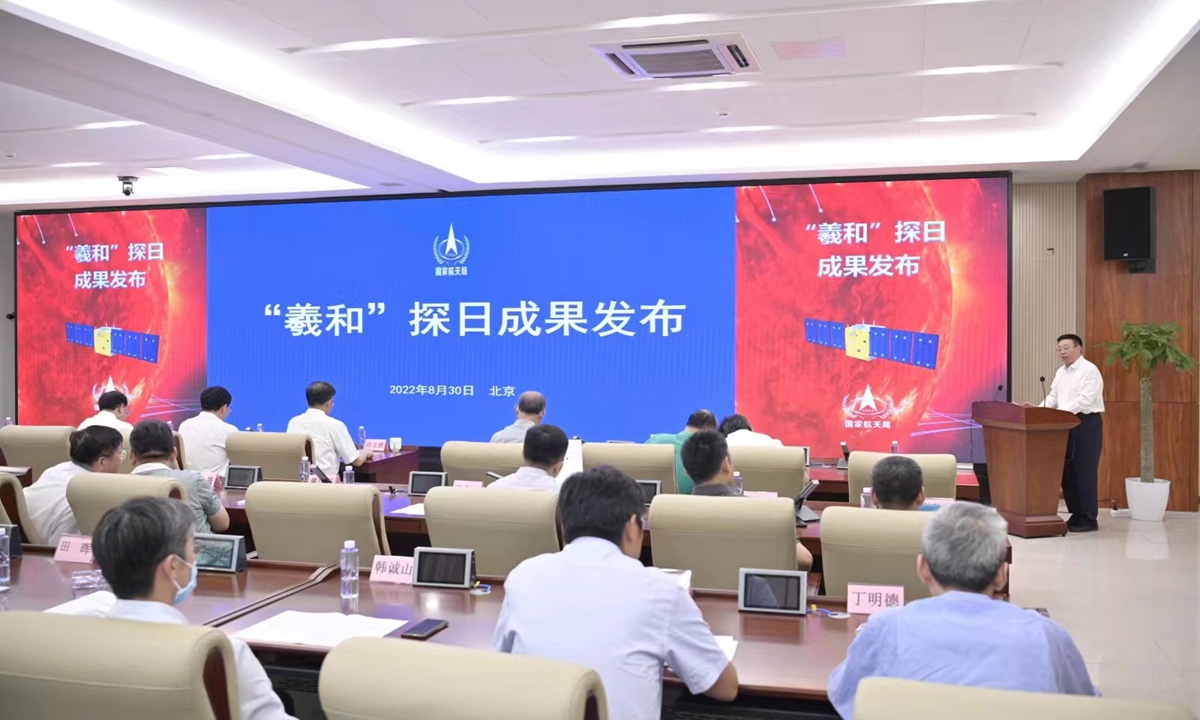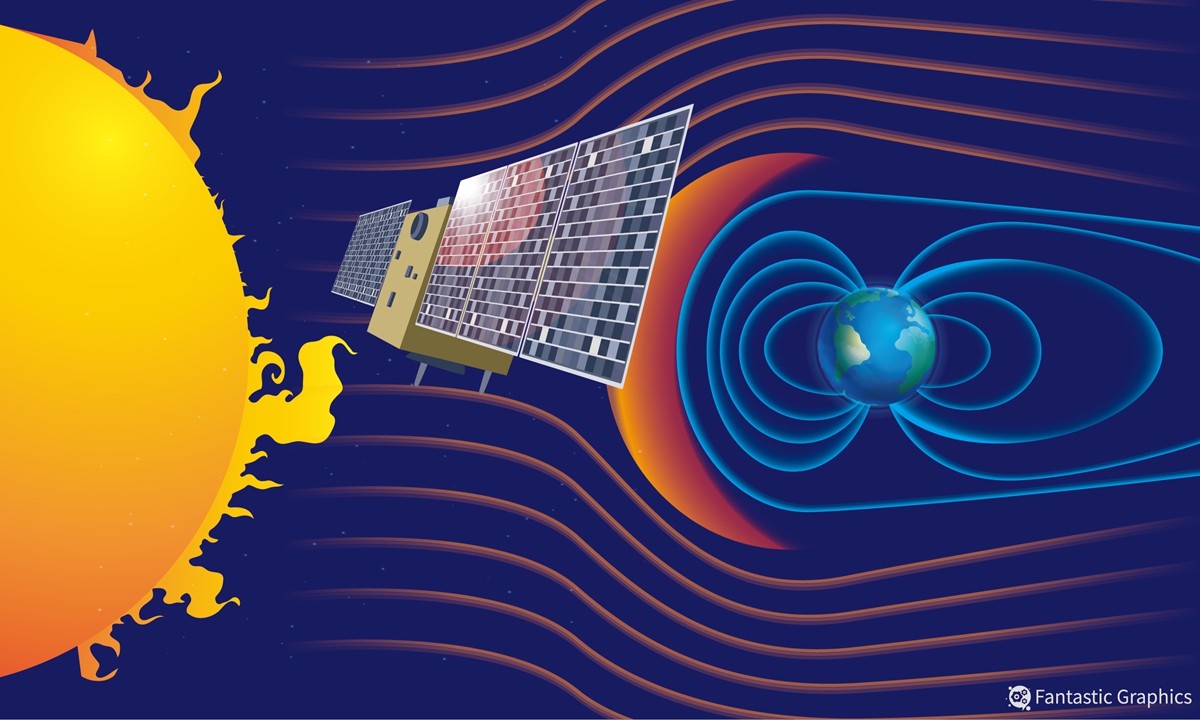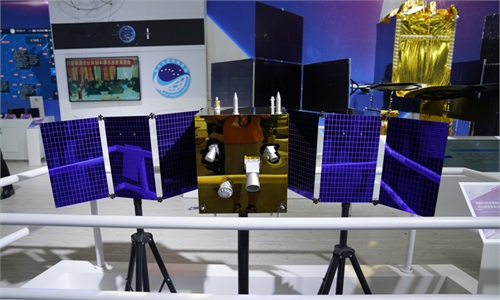China’s Sun-probing satellite achieves 5 historic ‘firsts,’ data shared globally: developer

The press conference on August 30, 2022 releasing China's first solar probing satellite's observation results in Beijing. Photo: Shanghai Academy of Spaceflight Technology
China's first solar probing satellite released its observation results in Beijing on Tuesday, setting five "world's firsts" which are of great significance to solar exploration missions and will boost China's influence in the field of space science.
Since its launch in October 2021, the satellite has collected and transmitted some 50 terabits (Tb) of observation data and 300 Tb of scientific data, all of it open for world players to share, and these observations have already been widely applied by scholars in the US, France and Germany, the Global Times learned from the project developer.
The satellite, named Xihe, was launched into orbit on October 14, 2021. Weighing 510 kilograms, it operates at an altitude of 517 kilometers in a dusk-dawn Sun-synchronous orbit.
It's equipped with an imaging spectrometer, making it the first in the world to have realized spectral imaging observations of the H-alpha band of the Sun, the Shanghai Academy of Spaceflight Technology (SAST), designer and manufacturer of the satellite, told the Global Times in a statement on Tuesday.

Photo: CFP
The H-alpha band is one of the best spectral lines to study solar activity. By analyzing the data of this line, people can obtain changes of physical quantities such as atmospheric temperatures and velocity during a solar eruption, and study the dynamic process and physical mechanism of a solar eruption.The spectrometer on the Xihe has a resolution of 0.0024 nanometers, about 10 times higher than the resolution of ground-based optical filters, reaching the international advanced level.
Each spectral scan image contains more than 300 photos, which can be regarded as a "CT scan" of the Sun's lower atmosphere. In each image, information of nearly 16 million points on the solar surface is reflected.
In addition to the H-alpha band spectral imaging, it has also for the first time in the world obtained the fine structures of the SiΙ and FeΙ spectral lines in orbit. Based on these observations, the activity occurring in the solar atmosphere can be recorded in detail, and the physical processes of solar activity can be studied.
So far, the Xihe has observed nearly 100 solar outbursts. Related research work is underway.
In another first, the satellite has applied magnetic levitation technology in orbit to increase accuracy and stability during operation.
The technology has raised the attitude control level of the satellite by one to two orders of magnitude, reaching the international advanced level. The technology will be promoted in next-generation space missions such as high-resolution remote sensing, solar stereo exploration and exoplanet discovery, among others.
"Solar activity has a great impact on Earth, especially the radiation of cosmic rays and solar wind, which can cause serious interference to the Earth's magnetic field, including communications systems. Therefore, it is necessary to study the movement of the Sun," Song Zhongping, a TV commentator who closely follows China's space program, told the Global Times on Tuesday.
China plans to carry out solar research programs including the Sun-Earth Lagrange L5 point exploration, observing the Sun from different directions and distances, to address important scientific questions such as the generation and evolution of the solar magnetic field and its relationship with solar activity, as well as the physical mechanism of solar eruptions and their impact on space weather.
The Sun-Earth Lagrange L5 point project is considered as vital for the development of solar exploration in China.
Using the special advantage of the Sun-Earth Lagrange L5 point, probes can stably observe the Sun and interplanetary space for a long time, and observe the active regions of the Sun that will face the Earth four to five days in advance. They can also monitor the whole process of a solar eruption spreading to Earth.
International solar exploration has entered a new stage, with various technologies and methods of all-dimensional, multi-view and multi-band exploration making great progress.
India plans to implement the AdityA-1 program in 2022, which will place a satellite in the halo orbit around the Lagrangian point 1 (L1) of the Sun-Earth system for integrated solar observation.
NASA's PUNCH mission, which consists of four suitcase-sized satellites, will be launched in 2025 to study the Sun's outer atmosphere, the corona, and how it generates the solar wind, according to Science Daily, a US-based media outlet.
A China-Europe joint space mission, Solar Wind Magnetosphere Ionosphere Link Explorer, is scheduled to send satellites into space before the end of 2024 to study the interaction mechanism between the solar wind and the Earth's magnetosphere.


